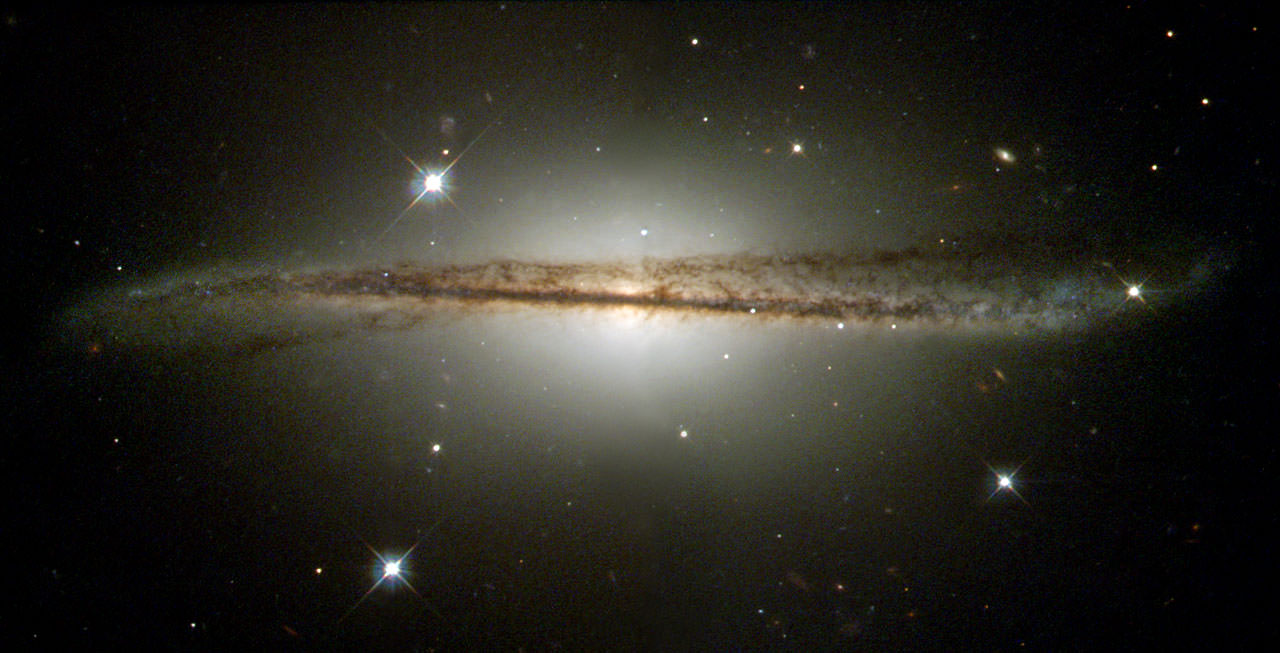[/caption]
This is an older image from Hubble but I came across it today and wanted to share it. It shows an unusual edge-on galaxy, that has been twisted by a recent collision with a nearby galaxy, and is in the process of being swallowed up. This could be a spiral sister to our own Milky Way, as the dust and arms of normal spiral galaxies appear flat when viewed edge-on. And the twisting effect could be an example of what could happen to our galaxy in about 3 billion years when it begins to collide with the Andromeda galaxy.
As the gravitational forces distort the structures of the galaxies as their stars, gas, and dust merge together, it also sparks star formation. In the outer regions of ESO 510-G13, especially on the right-hand side of the image, the twisted disk contains not only dark dust, but also bright clouds of new, blue stars.
Eventually, in millions of years, all the matter will coalesce and the activity and disturbances will die out, and ESO 510-G13 will become a normal-looking single galaxy.
This galaxy was first observed by ESO’s ground based telescopes, and Hubble’s Wide Field Planetary Camera 2 (WFPC2) observed ESO 510-G13 in April 2001.

